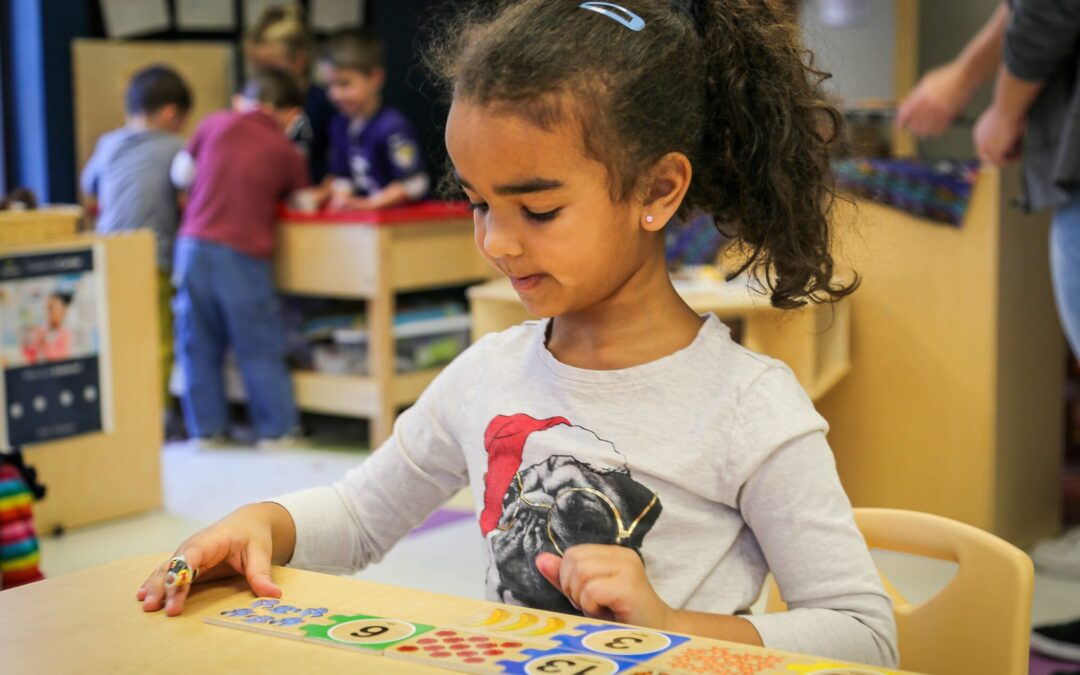Math Beyond Counting: Building a Strong Early Math Foundation
In the world of education, language arts and math are everything. They are THE subjects that we base our children’s education around. But math can sometimes feel intimidating when working with children. We focus on skills like counting from one to ten, but when it comes to building a math toolbox, we don’t often know where to start.
“Look, I can count!”
“1,2,3,4,5,6,7,8,9,10 I DID IT!”
Counting by rote is a wonderful skill. But it is just words if children don’t begin to gain an understanding of what those numbers mean. This skill allows children to start learning sequencing, which develops into being able to understand “one more”, which becomes addition.
However, it can trick adults into thinking a child “knows” a number. Being able to say the number three and identify a group of three objects are two different skills. One-to-one correspondence is building the skills that allow us to look at a group of objects and say, “There are three balls”.
Practice Activities
There are lots of fun activities to help children slow down and connect the numbers they are saying to the numbers they are seeing. Using counting mats and having the children gather that number of items on each mat can be a great visual and kinetic learning activity. With our toddlers and twos, teaching children to touch each object as they say the number can be more reliable than teaching them to count on their fingers, as fine motor skills can be somewhat unpredictable during this age. Silly questions, such as pointing to a group of objects and saying “Do you think that’s three babies or a HUNDRED babies?” can give children confidence to identify groups.
Shapes Have Jobs
Identifying shapes is a great skill, but why is it important? It’s because shapes have jobs. A rectangle can build a tower, but a circle is what helps a car roll. Why do roofs need to be triangles instead of squares?
As your child starts to identify shapes, it is important to talk about the job those shapes are doing. Our table is a rectangle. Those long sides let us have room for everyone while we eat! It’s also okay to point out when any shape can do the job. A table can be a circle, triangle, or square, but the square shape is what best fits our space.
Shapes in Space
Spatial relations are another important math skill that we can explore deeper with young children. Most kids encounter a toy that requires them to put the correct-shaped object through a hole. But we can enhance those skills with real-world application. Give children two different-sized buckets and ask them to clean up the space. Which bucket best fits on the shelf and holds all the toys? How many friends can fit into one center and still have room to play? Do you notice how you are sitting on a friend because this space is too small? If we have a circular and a rectangular-shaped bucket, which one will hold pieces of paper better?
Patterns Recognition
For most children, their first pattern is their daily schedules. Children recognize that after lunch, there is a nap. Introducing physical patterns with games like Simon Says can help build the connection between repeated actions. Pattern recognition builds the neural network that will support counting by twos and tens in just a few years. It’s what allows children to understand “If I add one, it will always be the next number.”
Real World Activities Equal Real World Confidence
Shapes and numbers are EVERYWHERE, and pointing them out often is important. If your child can only recognize an item if it is on a specific flash card or poster, then they are not confident in that skill yet. Taking time to notice the shapes of signs and the numbers on the grocery store aisle can be a small activities that make a big difference.
Math in the early years is so much more than memorizing numbers. It’s about building understanding through play, exploration, and everyday experiences. When we connect counting, shapes, space, and patterns to the real world, children gain the confidence to see math everywhere around them. By slowing down, asking questions, and making math fun, we lay the foundation for problem-solving skills that will support their learning for years to come.
Written by Abby Knight, Assistant School Director

